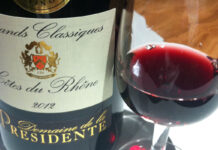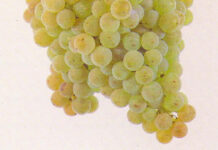Luke Richardson is the sommelier at wine bar Le Di-Vin in Edinburgh. In his column for SLTN he shares his thoughts on all things wine-related and answers your questions about wine. If you have a question for Luke email it to sltn@peeblesmedia.com

HELLO again! Happy New Year to one and all, let us hope it gets better for our industry soon.
I thought this month I would talk about some ways to help get some extra cash flow through your businesses when we can again serve a glass or two of wine to our customers, using trends in wine to your advantage.
Firstly, the grape varieties that were ‘in’ pre-lockdown are still very much Malbec and Viognier.
Malbec originates from the south west of France, most famously as Cahors but the wider preference is for the Argentinian version – more supple and giving on the fruit front. Think plums, blackcurrant, black cherry, sometimes a peppery or slightly leathery finish and great with anything with red meat, especially steak.
No one really knows where Viognier originates from, but its ‘modern’ home is the Rhone Valley in France, – an area it was most probably brought to by the Romans.
It is now grown around the world, with varying amounts of fruit and weight normally down to how hot the growing region is: hotter = fatter, richer wines with a little less acidity; cooler = less fruit, a bit more acidity and sometimes a whisp of white pepper dancing around on the finish. The fruit is nearly always like stone fruit – peach/nectarine/apricot, that sort of thing; and even the more acidic wines are still fairly low in levels of acidity compared to a Pinot Grigio or Sauvignon Blanc.
So, if you don’t have one of each of these on by the glass, I would highly recommend investing in one.
On the subject of wines by the glass, a rough pricing guide would be between 3 x cost (60% GP) and 4 x cost (70% GP) as a bottle selling price, and then add a little extra for the wines by the glass. So if you are buying at £7 plus VAT, sell at £21/£28 a bottle (60%/70% GP), then I would sell glasses as follows: 125ml at £4/£5 (based on bottle priced at 60%/70% GP) = £24/£30 return on selling 750ml; 175ml at £5.50/£7.00 = £23.54/£29.96 return per ‘bottle’; 250ml at £7.50/£9.50= £22.50/£28.50 return per ‘bottle’.
Now, if you already have one of each, my main tip here is to list another of each by the glass, a more premium example.
My general feeling is that, when our doors are open and our customers return, they will want to spend a little more – they certainly did between the lockdowns when we managed to open the wine bar.
So if you have a Malbec or a Viognier on at around the £25 mark per bottle, I would put out a “wine of the week” or “wine special” at around £35 to £40 a bottle, and make it available by the glass.
And, although it can be a bit of a pain to have three glass sizes, I would heartily suggest it – more choice for the customer, and better return for your money!
Well, that’s me out of space, until next time …



















